|
Introduction
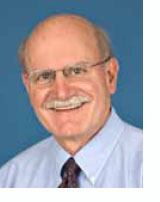 This past year, the Orthopaedic Department at Children’s
Hospital Boston had another fantastic year, filled with challenges,
accomplishments and changes. From 2008-2009,
our service continued to grow at a rate of approximately 5%
in both surgical volume and ambulatory visits. Education of
fellows, residents and medical students continued with the
added stresses of the 80-hour work week, migration of cases to
satellite facilities and ever-increasing demands upon time. Our
research program has expanded, both in the clinical and basic
science area. Perhaps most significant of all, is the appointment
of Peter Waters as the Chief of Clinical Orthopaedic
Surgery at our hospital.
This past year, the Orthopaedic Department at Children’s
Hospital Boston had another fantastic year, filled with challenges,
accomplishments and changes. From 2008-2009,
our service continued to grow at a rate of approximately 5%
in both surgical volume and ambulatory visits. Education of
fellows, residents and medical students continued with the
added stresses of the 80-hour work week, migration of cases to
satellite facilities and ever-increasing demands upon time. Our
research program has expanded, both in the clinical and basic
science area. Perhaps most significant of all, is the appointment
of Peter Waters as the Chief of Clinical Orthopaedic
Surgery at our hospital.
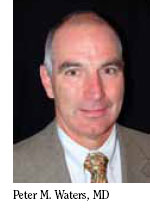
DEPARTMENT LEADERSHIP
Let me begin with the change in
leadership. Dr. Waters has been a hand
and upper extremity surgeon here at
Children’s Hospital since 1988. He
has become a national leader in pediatric
orthopaedic surgery and has been
a major contributor to various committees
and administrative functions
within the hospital. At the same time,
he has been an outstanding educator
and clinical researcher. His promotion
to Professor at Harvard Medical School occurred in 2005. I was
privileged to be able to appoint Peter to the position of Chief
of Clinical Orthopaedic Surgery, as my role within the hospital
has changed somewhat. I took over as the Surgeon-in-Chief at
Children’s and am spending more time in administrative duties.
Dr. Waters has been responsible in the past for the outpatient
program and the move to be in charge of the entire clinical
program and education effort was a small step for Peter but
carries with it a major benefit for our department. He along
with Young-Jo Kim and Don Bae are leading the educational
effort of the residents at this time, and I must say that both our
interest and reputation in resident, fellow and medical student
education remain intact and, if anything, enhanced.
TEACHING PROGRAM
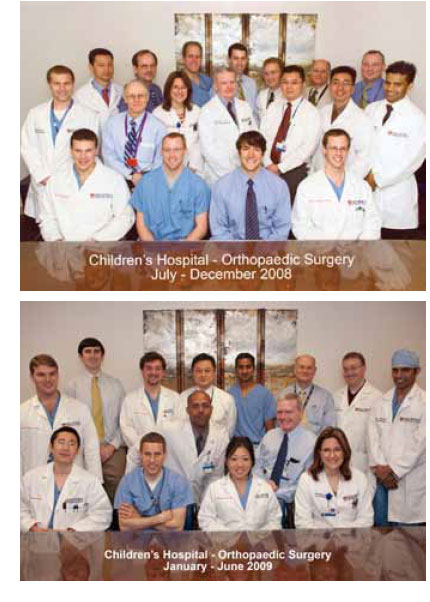 As always, education is a major part of our mission and
there is no change in emphasis, despite clinical demands.
We continue to have six Harvard residents in their third year,
complemented by one Dartmouth resident and one Lenox Hill
resident. In addition to the resident housestaff, there are three
orthopaedic fellows, three Sports Medicine orthopaedic fellows,
a hand fellow, a tumor fellow and an adolescent/young adult hip
fellow. Tremendous effort has been put forth to ensure that
the fellows complement the education of the residents and that
work is split equitably. We attempt to ensure that each resident
has sufficient length of rotation and exposure to attendings
so that educational benefit and operative experience is maximized.
This remains a bit of a challenge as it does mean that all
residents cannot rotate with all staff. Surprisingly, we have 24
orthopaedic surgeons at this time on staff at Children’s Hospital
Boston. Balancing the duties of residents and fellows is Young-
Jo Kim’s responsibility and he does a masterful job at it.
As always, education is a major part of our mission and
there is no change in emphasis, despite clinical demands.
We continue to have six Harvard residents in their third year,
complemented by one Dartmouth resident and one Lenox Hill
resident. In addition to the resident housestaff, there are three
orthopaedic fellows, three Sports Medicine orthopaedic fellows,
a hand fellow, a tumor fellow and an adolescent/young adult hip
fellow. Tremendous effort has been put forth to ensure that
the fellows complement the education of the residents and that
work is split equitably. We attempt to ensure that each resident
has sufficient length of rotation and exposure to attendings
so that educational benefit and operative experience is maximized.
This remains a bit of a challenge as it does mean that all
residents cannot rotate with all staff. Surprisingly, we have 24
orthopaedic surgeons at this time on staff at Children’s Hospital
Boston. Balancing the duties of residents and fellows is Young-
Jo Kim’s responsibility and he does a masterful job at it.
The conference schedule remains much the same as it has
in the past, with the Fellows’ Conference on Monday mornings,
didactic lectures in pediatric orthopaedics and fractures
on Tuesday and Friday. There is also Grand Rounds with all
hospitals on Wednesday morning. The Chief’s Conference or
case discussion conference which had previously been held on
Thursday is supplanted by an Indications Conference, Journal
Club or M&M Conference.
The effort to have pre-operative patients evaluated by
residents continues but has become much more difficult to
achieve. In order for residents to gain information about
pre-operative patients, cases are assigned well in advance of
time of surgery. An electronic medical record system with a
PACS imaging system facilitates patient information retrieval
and education. Indications Conference continues on a weekly
basis but discussion with individual attendings is the key to
proper pre-operative planning. We are divided into 10 clinical
programs such as Trauma, Adolescent/Young Adult Hip, Spine,
Sports Medicine, Hand and Upper Extremity, etc. Many of these
clinical programs hold indications conferences separately, facilitating
subspecialty education within pediatric orthopaedics.
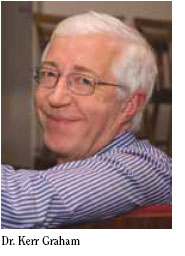 The night float system for residents has been put into place
to prevent 80-hour work week violations and this appears to be
working reasonably well. Residents rotate approximately 3 weeks
at a time as the night trauma resident from 7PM to 7AM.
The night float system for residents has been put into place
to prevent 80-hour work week violations and this appears to be
working reasonably well. Residents rotate approximately 3 weeks
at a time as the night trauma resident from 7PM to 7AM.
One of the highlights of our
educational program each year is
the David Grice Visiting Professor;
this year we had an outstanding
visit with Kerr Graham from
Melbourne, Australia. Dr. Graham
is an expert in cerebral palsy and
has done much to correlate functional
outcomes with surgical
expectations and indications in CP
patients. He is also an expert in
gait evaluation relative to cerebral
palsy and surgical decision making. During Kerr’s week-long
visit, there was a multi-disciplinary course for primary care
physicians which was exceedingly well attended, under the
direction of Dr. Brian Snyder and Dr. Travis Matheney. Our
Grice Lecture Program consisted of one full day of lectures and
research talks in the morning, with case presentation from the
residents and discussion in the afternoon. Kerr spent 4 days
in the ambulatory clinics and the operating room, evaluating
patients, participating in resident and attending conferences
and provided much to our educational program. We are fortunate
to have this endowed professorship to enrich our academic
environment each year. We have an ongoing relationship with
Melbourne which is multi-faceted. One of our current fellows,
Jit Balakumar, is from Melbourne; Travis Matheney had a
month-long visit to Melbourne to look at cerebral palsy treatment;
Mark Sullivan had an extensive visit with us last year.
We are hoping to have an ongoing exchange program facilitating
pediatric orthopaedic education of both staff and residents
between our institutions.
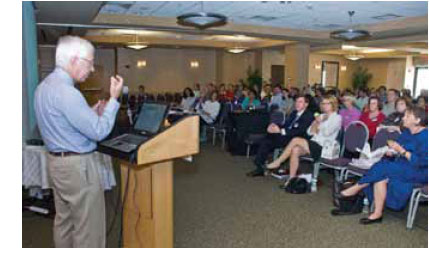 Don Bae has taken over the CORE educational program
for the Harvard Combined Orthopaedic Residency and will be
arranging all of the lectures in this comprehensive didactic educational
program. The CORE conference program is a major
contributor towards the didactic education of the residents,
ensuring improved performance on both OITE and Board
examination. Don, as all of you know, is an outstanding educator,
teacher and pediatric upper extremity surgeon.
Don Bae has taken over the CORE educational program
for the Harvard Combined Orthopaedic Residency and will be
arranging all of the lectures in this comprehensive didactic educational
program. The CORE conference program is a major
contributor towards the didactic education of the residents,
ensuring improved performance on both OITE and Board
examination. Don, as all of you know, is an outstanding educator,
teacher and pediatric upper extremity surgeon.
With respect to medical student education, Dr. Timothy
Hresko has done an excellent job of coordinating the staff
for medical student teaching. We continue to have third and
fourth year students rotating through the service, as well as
a number of students participating in research experiences
in the first and second years. As the medical school program
has evolved to include a focused research project during the
four years of medical school, more students are available and
interested in developing research interests during their medical
school years. We have two areas of research activity in which
the medical students can be involved. The first is the basic
science laboratory under the direction of Matt Warman, MD
and the other is a clinical research effort through the Clinical
Effectiveness Unit in our department. The research lab is a
musculoskeletal lab with a genetics bent.
They are working on
mechanisms of bone formation and degradation, joint lubrication,
articular cartilage degradation and finally, a number of
musculoskeletal genetic conditions.
Matt Warman is a Howard
Hughes investigator with an appointment both in Genetics and
Orthopaedic Surgery.
Dr Melvin Glimcher remains active in
the bone mineralization laboratory, looking at structure of bone
and mechanisms of calcification. We have welcomed both residents
and medical students into the lab and a number of have
been productive in this venue.
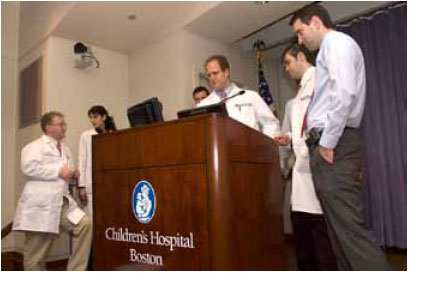
CLINICAL PROGRAM DEVELOPMENT
The past year has brought with it tremendous development
of the clinical program in Waltham where we have a small inpatient
unit and an 8,000 square foot ambulatory area with seven
pods for orthopaedic patient ambulatory visits. Complemented
by four operating rooms and all necessary imaging modalities,
we can provide full orthopaedic care in the suburban setting,
just as we provide in the Longwood Campus. With free parking
and pleasant surroundings in Waltham, one would think that
we’d have trouble attracting people to the Longwood Campus.
Surprisingly, the Longwood Campus remains as packed as ever,
despite marked growth in the Waltham area. Our Waltham
ambulatory setting has a capacity for about 30,000 ambulatory
visits and after two years of operation, we are just shy of 20,000
annual visits.
As the surgical volume continues to increase, it will be necessary
for us to move residents and fellows from Longwood to
the Waltham setting. This will be necessary in order to have an
educational program which includes small cases as well as the
hip, spine, brachial plexus and tumor repairs commonly seen at
the main campus which cannot be moved to a satellite setting.
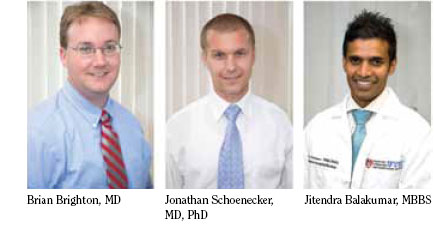
PEDIATRIC ORTHOPAEDIC FELLOWS
This year, we have three fellows in our ACGME-approved
fellowship in Pediatric Orthopaedics. The fellows are Brian
Brighton, MD who did his residency at Cleveland Clinic;
Jonathan Schoenecker, MD, PhD from Vanderbilt; and Jitendra
Balakumar, MBBS, from Melbourne, Australia. Brian’s interest
is in general pediatric orthopaedics and spine and he will go to
Carolina Medical Center starting in the fall. Jon Schoenecker
came to us from Vanderbilt and will return to practice pediatric
orthopaedics and lead a basic science research lab. Jit
Balakumar will return to Melbourne for the practice of pediatric
orthopaedic surgery and spine surgery in an academic setting.
Next year, two of our orthopaedic residents, Coleen
Sabatini and Mike Glotzbecker, are entering into pediatric
orthopaedic fellowships. Mike will stay here as a fellow with us
and Coleen who has a long-term interest in being in Southern
California will be going to LA Children’s Hospital. Both are
outstanding residents and will be top pediatric orthopaedic
surgeons, I predict.
Our fellowship program is complemented by Sports fellows,
both primary care and orthopaedics. An upper extremity
fellow from the Combined Program at the Brigham and
Women’s Hospital and a tumor fellow from the combined program
in Orthopaedic Oncology at BIDMC and MGH.
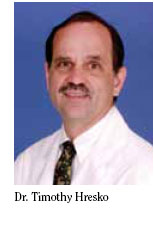 PROMOTIONS
PROMOTIONS
Over the past year, Dr. Timothy
Hresko was promoted to Associate
Professor of Orthopaedic Surgery. His
interests remain primarily in spine surgery,
with his research activity focused
on idiopathic scoliosis. He has a secondary
interest in medical student education
and has led our medical student
clinical and research program over the
last 15 years.
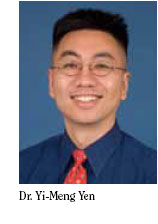
NEW STAFF
Dr Yi-Meng Yen has joined our staff
in pediatric orthopaedics and Sports
Medicine. He completed a fellowship
with us in pediatric orthopaedic surgery,
following a Sports Medicine fellowship
at Steadman Hawkins Clinic
in Vail, Colorado. His residency was
at UCLA, as was his medical school
education. He is a great addition to
the department. The Division of Sports
Medicine has grown remarkably under the leadership of Drs.
Micheli and Kocher. We have 5 full-time orthopaedic Sports
Medicine physicians and a busy cadre of primary care Sports
Medicine docs.
OTHER STUFF
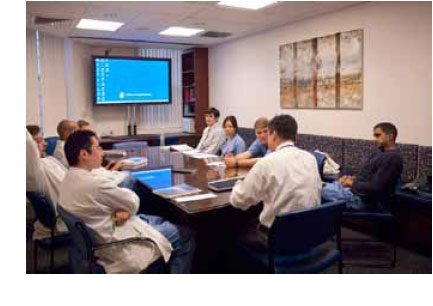 For those of you who remember the Orthopaedic Offices
on Hunnewell 2 in the old Children’s Hospital building, circa
1914, not much has changed; new staff continues to be added
to old space, bunking 2 or even 3 to an office. The administrative
assistants’ offices often hold three people. Our library,
which could no longer hold expanded staff and residents, was
remodeled a bit this year. We took the novel approach of tearing
out the bookcases in order to increase the size of the room
and provide a bench for a second row of seating around the
conference table. This allows us to increase the numbers of
attendees at conference to approximately 25. The conference
room looks great with the addition of computers and literature
search capabilities. Traditional textbooks and journals are not
nearly so important to education as computers and Internet
capability. No longer do we have the pull-down screen but a
large flat screen monitor on which lectures and images project
wonderfully. If we can get the Red Sox on the screen in the
conference room, it will be perfect.
For those of you who remember the Orthopaedic Offices
on Hunnewell 2 in the old Children’s Hospital building, circa
1914, not much has changed; new staff continues to be added
to old space, bunking 2 or even 3 to an office. The administrative
assistants’ offices often hold three people. Our library,
which could no longer hold expanded staff and residents, was
remodeled a bit this year. We took the novel approach of tearing
out the bookcases in order to increase the size of the room
and provide a bench for a second row of seating around the
conference table. This allows us to increase the numbers of
attendees at conference to approximately 25. The conference
room looks great with the addition of computers and literature
search capabilities. Traditional textbooks and journals are not
nearly so important to education as computers and Internet
capability. No longer do we have the pull-down screen but a
large flat screen monitor on which lectures and images project
wonderfully. If we can get the Red Sox on the screen in the
conference room, it will be perfect.
Dr. Hall continues to thrive and comes in once a month
for a visit and to check his mail. Dr. Paul Griffin is living in The
Cliffs, a golf community in the mountains outside of Greenville,
South Carolina.
If you are in the area, stop by for a visit. While we remain
a busy, over-committed group, there is always time for visits
from old friends and new ideas into these old walls.
|

